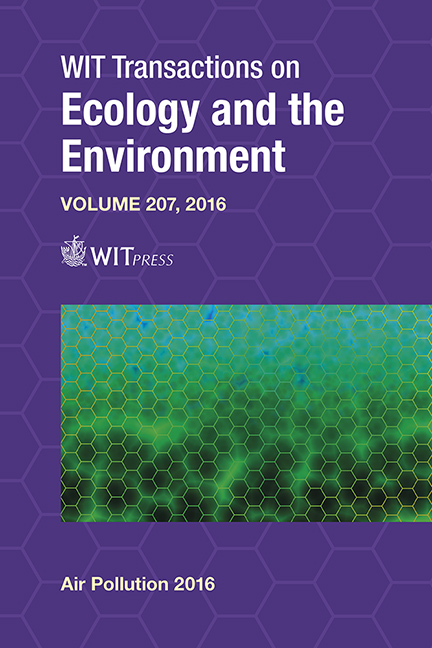PM2.5/PM10 Relationship In The Metropolitan Area Of Valle De Aburrá, Colombia
Price
Free (open access)
Transaction
Volume
207
Pages
10
Page Range
111 - 120
Published
2016
Size
405 kb
Paper DOI
10.2495/AIR160111
Copyright
WIT Press
Author(s)
C. E. Zapata, N. A. Cano, M. Ramirez
Abstract
Valle de Aburrá is a valley located in the Andes mountain range, and it is characterized for being a geographically narrow valley with thermal inversion problems. The environmental authority (Área Metropolitana del Valle de Aburrá), has established an Air Quality Monitoring network with stations in nine of the ten municipalities forming the valley. The network is operated by the National University of Colombia.
Although the air quality network monitors particulate material (PST, PM10, PM2.5 and PM1), nitrogen dioxide, sulphur dioxide, carbon monoxide and ozone, apart from meteorological variables, the problematics concerning air quality in Valle de Aburrá has historically been associated with the breathable particulate matter PM10 and the inhalable particulate matter PM2.5.
Results obtained from the monitoring of PM10 and PM2.5 for the period July–December 2013 are presented in this study, for the stations measuring both of the pollutants. Additionally, the PM2.5/PM10, relationship is reported, which can be used as a parameter for decision-making concerning health protection of the inhabitants of Valle de Aburrá, as well as the correlation coefficients for each station. According to the results, the PM2.5/PM10 relationship in the MED-UNFM station was 0.501, in the MED_PJIC station this relationship was of 0.380, and in the ITA_CONC station, it was 0.496.
Keywords
atmospheric pollutants, inhalable particulate matter (PM2.5), breathable particulate matter (PM10), PM2.5/PM10, relationship, emission, Colombian environmental standard





